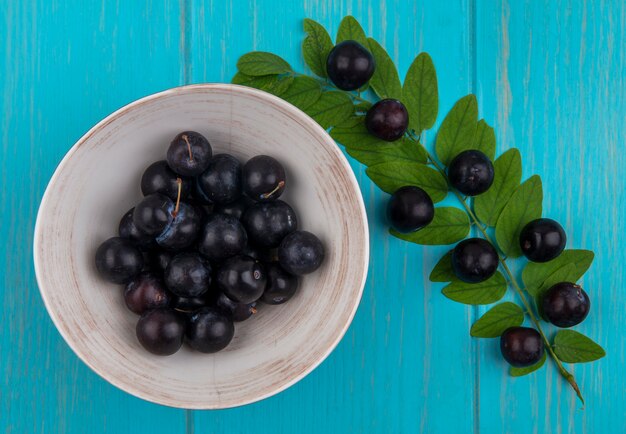
Two incredible superfoods, acai berry and maqui berry, have gained popularity for their impressive health benefits and nutritional value. These two berries, often compared to the well-loved blueberry, are nutrient-dense and versatile, making them a favorite among health enthusiasts. If you’re trying to figure out which one is better for you, this guide will help you understand the key differences and benefits of each.
### Acai Berry
Acai berries come from the Amazon rainforest in Brazil. These round, dark purple fruits have a pit inside, and only their juicy flesh is edible. Despite their small size, they are loaded with beneficial nutrients, making them a powerhouse for your overall health. Acai berries are rich in calcium, iron, and antioxidants like anthocyanins, which give the berries their vibrant purple color. These antioxidants help protect your body from damage caused by free radicals.
What’s more, acai berries are packed with healthy fats, including essential fatty acids and monounsaturated fats, which are great for promoting skin health. These fats not only contribute to a glowing complexion but also give the berries a smooth, creamy texture when mixed into recipes. Acai berries are often used in smoothies, puddings, and even ice cream, adding flavor and nutrition to these dishes. However, when cooking with acai powder, it’s important to avoid high heat, as it can affect its flavor without impacting its nutritional value.
### Maqui Berry
Maqui berries are native to Chile’s Patagonian region and are harvested just once a year. These berries look similar to acai berries and blueberries, with a deep royal purple hue. Their color is so intense that they can stain anything they touch. Maqui berries quickly gained attention after entering the market for their extraordinarily high antioxidant content, particularly anthocyanins, which are much higher than what acai offers.
Antioxidants play a crucial role in fighting free radicals and reducing oxidative stress, which contributes to everything from aging to numerous health conditions. Many external factors, like pollution and unhealthy lifestyles, limit our body’s ability to produce enough antioxidants, making berries like maqui an excellent dietary source for replenishment. In addition to antioxidants, maqui berries are rich in vitamin C, potassium, and fatty acids. While they don’t contain the healthy fats found in acai, their high vitamin C content supports the immune system and promotes anti-aging effects.
Maqui berry powder is a convenient way to include these nutrients in drinks, sauces, and salads. It has a subtle flavor, making it an easy addition to any diet. However, to preserve its antioxidant content, it’s best used in recipes that involve low heat or none at all.
### Key Differences Between Acai and Maqui Berries
#### ORAC Value
One significant factor separating acai and maqui berries is their oxygen radical absorbance capacity (ORAC), which measures their antioxidant power. According to Brunswick Laboratories, maqui berries have an ORAC value of 6120 per gram—2 to 3 times higher than that of acai berries. This means you’d need fewer maqui berry supplements compared to acai to receive the same antioxidant benefits.
#### Taste
While both berries are nutrient-rich, they differ in taste. Maqui berries are preferred by those sensitive to aftertastes, as they leave little to none, making them more appealing for children or picky eaters.
#### Nutrition
Acai and maqui berries both deliver essential nutrients. Acai offers vitamins A, C, and E, as well as omega fatty acids (3, 6, and 9). Maqui berries provide vitamins A and C, along with calcium, potassium, and antioxidants. However, maqui does not contain omega-3 fatty acids, which are vital for heart and brain health.
#### Antioxidants
Both berries excel in delivering antioxidants, specifically anthocyanins, which combat free radicals to promote healthier skin and reduce signs of aging. Acai is known to have higher anthocyanin levels than blueberries and grapes, while maqui’s antioxidant capacity outshines acai by up to 30 times, as noted by some studies.
### How to Incorporate These Berries in Your Diet
Both acai and maqui berries come in convenient powder form, which you can easily find in health food stores or online. These powders are often made from freeze-dried berries to retain their nutritional value. Certified USDA organic, they are versatile for use in smoothies, dressings, sauces, oatmeal, yogurt, or even sprinkled over salads. For an energy boost and skin-nourishing benefits, add them to your breakfast or include them in unheated recipes to preserve their nutrients.
### Conclusion
Acai and maqui berries are both outstanding additions to a healthy diet. While maqui holds the edge in antioxidant content, acai offers unique fatty acids that benefit skin health and overall wellbeing. Rather than choosing one over the other, it’s a good idea to include both berries in your diet for a well-rounded variety of nutrients. Alternating between the two can ensure your body receives a diverse mix of antioxidants, omega fatty acids, vitamins, and minerals, supporting your health in multiple ways.